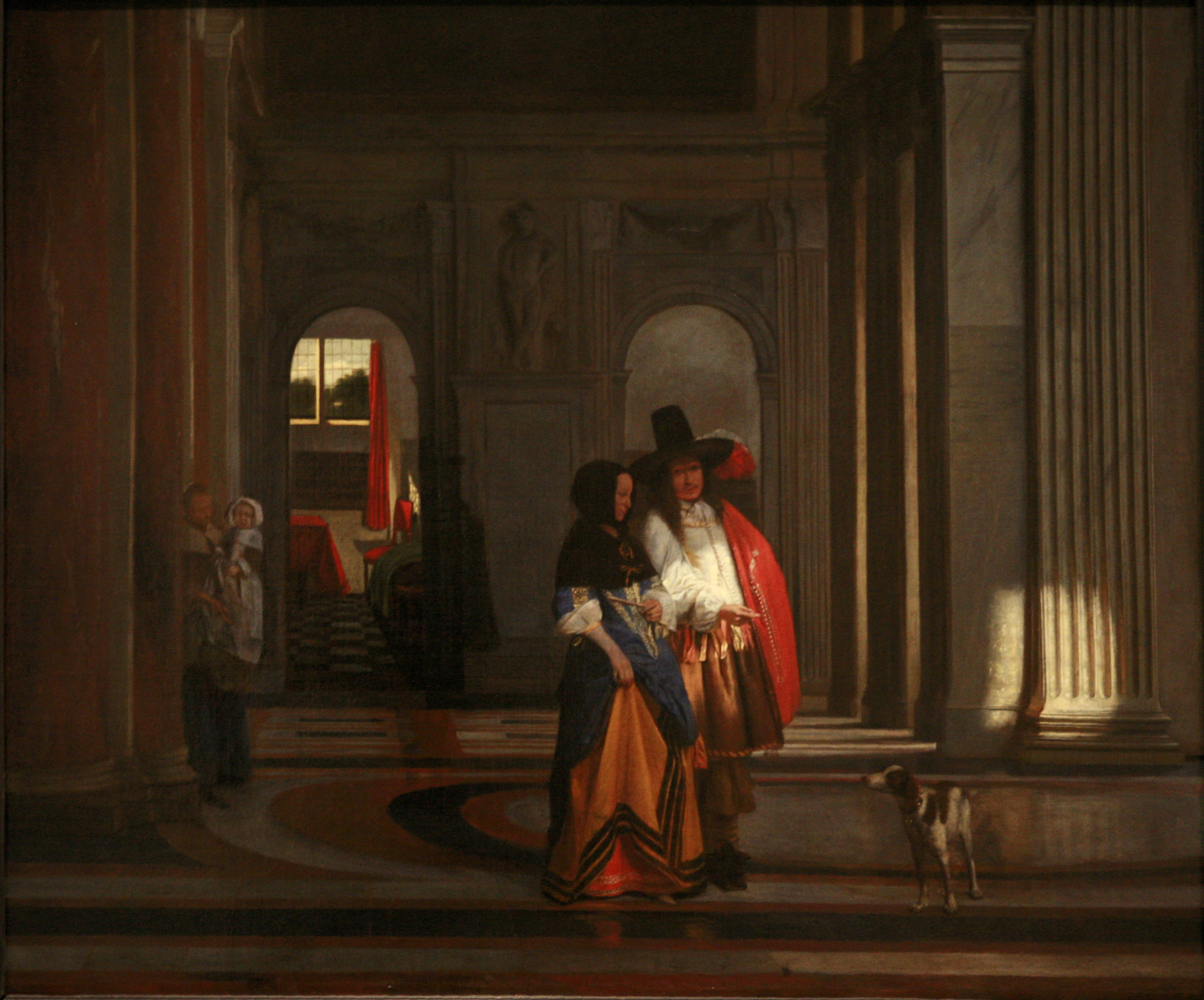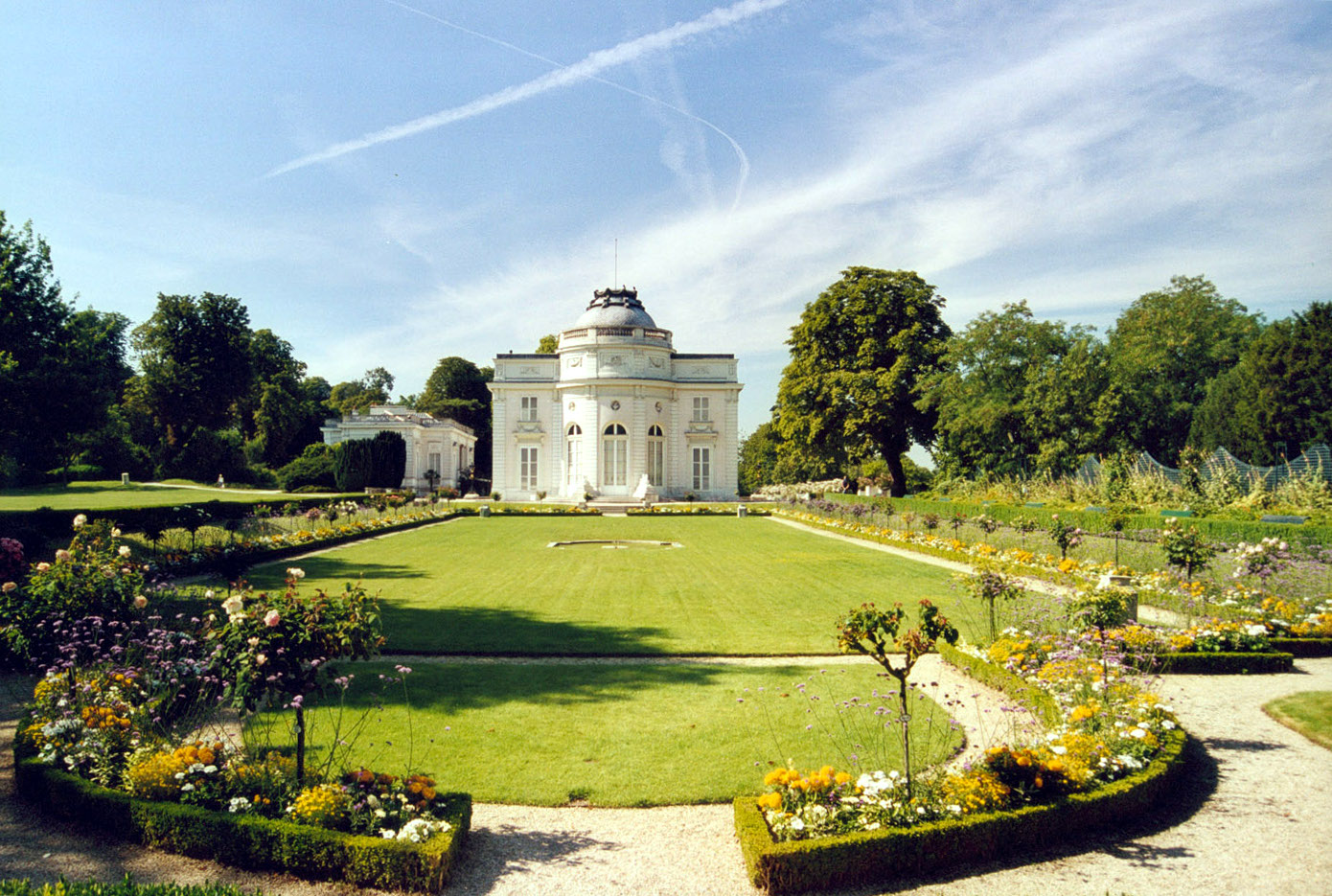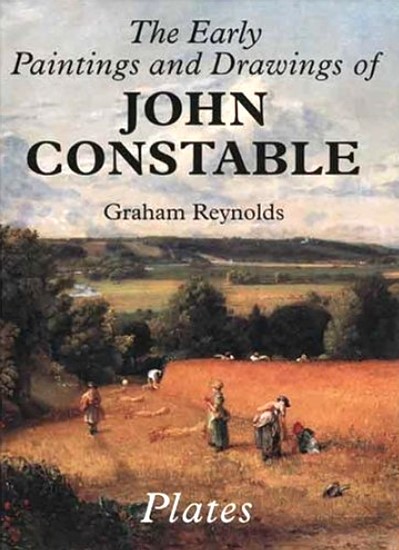|
A Boy Bringing Bread
''A Boy Bringing Bread'' (c. 1663) is an oil-on-canvas painting by the Dutch painter Pieter de Hooch. It is an example of Dutch Golden Age painting and is part of The Wallace Collection. Descriptions and commentary A boy offers a basket of bread to a lady in an interior; behind them a tiled courtyard leads into another dark interior, beyond which can be seen a canal with a second woman, possibly the boy's mother, watching the transaction from afar. With its masterly illusion of receding depth, the picture demonstrates De Hooch's sensitivity to differing effects of daylight in adjoining spaces, in this case through a series of indoor and outdoor spaces. Originally a girl reading a book sat in the doorway, but she was painted out in favour of the lady and the boy, whose stance echoes the verticality of the architecture and prompts the eye to travel upwards into the picture space. By paring down his composition De Hooch focuses the viewer's attention and imbues the scene with int ... [...More Info...] [...Related Items...] OR: [Wikipedia] [Google] [Baidu] |
Pieter De Hooch
Pieter de Hooch (, also spelled "Hoogh" or "Hooghe"; 20 December 1629 (baptized) – 24 March 1684 (buried)) was a Dutch Golden Age painter famous for his genre works of quiet domestic scenes with an open doorway. He was a contemporary of Jan Vermeer in the Delft Guild of St. Luke, with whom his work shares themes and style. Biography De Hooch was born in Rotterdam to Hendrick Hendricksz de Hooch, a bricklayer, and Annetge Pieters, a midwife. He was the eldest of five children and outlived all of his siblings. Little is known of his early life and most archival evidence suggests he worked in Rotterdam, Delft, and Amsterdam. According to his first biographer Arnold Houbraken, he studied art in Haarlem under the landscape painter Nicolaes Berchem at the same time as Jacob Ochtervelt and was known for his "kamergezichten" or "room-views" with ladies and gentlemen in conversation. [...More Info...] [...Related Items...] OR: [Wikipedia] [Google] [Baidu] |
A Woman Peeling Apples
''A Woman Peeling Apples'' (c. 1663) is a painting by the Dutch Golden Age painter Pieter de Hooch in the Wallace Collection in London. Description It is a genre painting showing a quiet domestic scene from the time, like most of de Hooch's works. The elaborate fireplace and fur and embroidery in the mother's clothes show a prosperous household, and the cupid between the two figures implies a happy one. Its sensitive handling of light—in particular, natural light filtered into an otherwise unlit interior space—led 19th-century art historians to attribute it to Johannes Vermeer, with whose work the painting does bear strong similarities. However, Vermeer's work typically portrayed a woman working alone instead of a family scene as in ''A Woman Peeling Apples''. Most scholars also now believe that de Hooch was influenced by Vermeer instead of Vermeer by de Hooch. The painting is in oil on canvas (67 cm × 55 cm). It is also sometimes referred to as ... [...More Info...] [...Related Items...] OR: [Wikipedia] [Google] [Baidu] |
Paintings By Pieter De Hooch
Painting is the practice of applying paint, pigment, color or other medium to a solid surface (called the "matrix" or "support"). The medium is commonly applied to the base with a brush, but other implements, such as knives, sponges, and airbrushes, can be used. In art, the term ''painting ''describes both the act and the result of the action (the final work is called "a painting"). The support for paintings includes such surfaces as walls, paper, canvas, wood, glass, lacquer, pottery, leaf, copper and concrete, and the painting may incorporate multiple other materials, including sand, clay, paper, plaster, gold leaf, and even whole objects. Painting is an important form in the visual arts, bringing in elements such as drawing, composition, gesture (as in gestural painting), narration (as in narrative art), and abstraction (as in abstract art). Paintings can be naturalistic and representational (as in still life and landscape painting), photographic, abstract, narrative, sy ... [...More Info...] [...Related Items...] OR: [Wikipedia] [Google] [Baidu] |
Paintings In The Wallace Collection
Painting is the practice of applying paint, pigment, color or other medium to a solid surface (called the "matrix" or "support"). The medium is commonly applied to the base with a brush, but other implements, such as knives, sponges, and airbrushes, can be used. In art, the term ''painting ''describes both the act and the result of the action (the final work is called "a painting"). The support for paintings includes such surfaces as walls, paper, canvas, wood, glass, lacquer, pottery, leaf, copper and concrete, and the painting may incorporate multiple other materials, including sand, clay, paper, plaster, gold leaf, and even whole objects. Painting is an important form in the visual arts, bringing in elements such as drawing, composition, gesture (as in gestural painting), narration (as in narrative art), and abstraction (as in abstract art). Paintings can be naturalistic and representational (as in still life and landscape painting), photographic, abstract, nar ... [...More Info...] [...Related Items...] OR: [Wikipedia] [Google] [Baidu] |
1660s Paintings
Year 166 ( CLXVI) was a common year starting on Tuesday (link will display the full calendar) of the Julian calendar. At the time, it was known as the Year of the Consulship of Pudens and Pollio (or, less frequently, year 919 '' Ab urbe condita''). The denomination 166 for this year has been used since the early medieval period, when the Anno Domini calendar era became the prevalent method in Europe for naming years. Events By place Roman Empire * Dacia is invaded by barbarians. * Conflict erupts on the Danube frontier between Rome and the Germanic tribe of the Marcomanni. * Emperor Marcus Aurelius appoints his sons Commodus and Marcus Annius Verus as co-rulers (Caesar), while he and Lucius Verus travel to Germany. * End of the war with Parthia: The Parthians leave Armenia and eastern Mesopotamia, which both become Roman protectorates. * A plague (possibly small pox) comes from the East and spreads throughout the Roman Empire, lasting for roughly twenty years. * ... [...More Info...] [...Related Items...] OR: [Wikipedia] [Google] [Baidu] |
List Of Paintings By Pieter De Hooch
The following is an incomplete list of paintings by Pieter de Hooch that are generally accepted as autograph by Peter C. Sutton and other sources. The list is more or less in order of creation, starting from around 1648 when Pieter de Hooch began painting on his own in Delft. Later he moved to Amsterdam and his interiors seem somewhat grander in style. Most of his works are genre scenes involving daily life, but he also made at least one religious allegory. Sources * ''A Catalogue Raisonné of the Works of the Most Eminent Dutch Painters of the Seventeenth century Based on the work of John Smith'', Volume I (Jan Steen, Gabriel Metsu, Gerard Dou, Pieter de Hooch, Carel Fabritius, Johannes Vermeer of Delft), by Cornelis Hofstede de Groot, with the assistance of Wilhelm Reinhold Valentiner, translated by Edward G. Hawke, Macmillan & Co., London, 1908 * ''Pieter de Hooch:Complete Edition'', by Peter C. Sutton, Phaidon Press, Oxford, 1980, * Pieter de Hooch in the RKD The Net ... [...More Info...] [...Related Items...] OR: [Wikipedia] [Google] [Baidu] |
Richard Seymour-Conway, 4th Marquess Of Hertford
Captain Richard Seymour-Conway, 4th Marquess of Hertford KG (22 February 1800 – 25 August 1870) was an English aristocrat and sometime politician who spent his life in France devoted to collecting art. From birth to 1822 he was styled Viscount Beauchamp and from 1822 to 1843 Earl of Yarmouth. Early life Lord Hertford was the son of Francis Seymour-Conway, 3rd Marquess of Hertford Francis Charles Seymour-Conway, 3rd Marquess of Hertford, (11 March 1777 – 1 March 1842), styled Viscount Beauchamp between 1793 and 1794 and Earl of Yarmouth between 1794 and 1822, of Ragley Hall in Warwickshire and of Sudbourne Hall in Su ... and Maria Seymour-Conway, Marchioness of Hertford. He had two siblings, Lord Henry Seymour-Conway, who also died unmarried, and Lady Frances Maria Seymour-Conway (the wife of the Marquis de Chevigne). His paternal grandparents were Francis Ingram-Seymour-Conway, 2nd Marquess of Hertford and, his second wife, Isabella Ingram-Seymour-Conway, Marchi ... [...More Info...] [...Related Items...] OR: [Wikipedia] [Google] [Baidu] |
Cornelis Sebille Roos
Cornelis Sebille Roos or Cornelis Roos (1754 – 1820) was a Dutch art dealer and inspector of the Nationale Konst-Gallery collection in Huis ten Bosch during the years 1799-1801 Roos was born 10 January 1754 in Amsterdam and baptized six days later in the Walloon church. He became a drawing teacher and manager of Felix Meritis, which he helped found. In 1798 he lived in the left-hand side of the Trippenhuis where he started his art dealership. Many of the paintings he originally purchased have found their way into the collection of the Rijksmuseum. He was friends with Jan Gildemeester and attended the estate sale of his art collection, buying many pieces there that later found their way in the Huis ten Bosch collection. The most notable of these was ''The Threatened Swan'' by Jan Asselijn, which became the first painting purchased by the director of the Nationale Konst-Gallery, Alexander Gogel. The painting, which is not dated, was painted before the events which caused it to be ma ... [...More Info...] [...Related Items...] OR: [Wikipedia] [Google] [Baidu] |
Oud Holland
''Oud Holland – Journal for Art of the Low Countries'' is a quarterly peer-reviewed academic journal covering art from the (Northern) Netherlands and Southern Netherlands (Belgium) from c. 1400–1920. Oud Holland is the oldest surviving art-historical journal in the world. It was founded by Adriaan de Vries and Nicolaas de Roever in 1883, since then 132 volumes have appeared. From 1972 the journal has been published by the RKD – Netherlands Institute for Art History; since 2008 in collaboration with Brill Publishers Brill Academic Publishers (known as E. J. Brill, Koninklijke Brill, Brill ()) is a Dutch international academic publisher founded in 1683 in Leiden, Netherlands. With offices in Leiden, Boston, Paderborn and Singapore, Brill today publishes 27 .... The editorial board consists of Elmer Kolfin (editor-in-chief), Menno Jonker (managing editor), John Bezold (online review editor), Jan Dirk Baetens, Yvonne Bleyerveld, Edwin Buijsen, Nils Büttner, Volker Manuth, T ... [...More Info...] [...Related Items...] OR: [Wikipedia] [Google] [Baidu] |
London
London is the capital and largest city of England and the United Kingdom, with a population of just under 9 million. It stands on the River Thames in south-east England at the head of a estuary down to the North Sea, and has been a major settlement for two millennia. The City of London, its ancient core and financial centre, was founded by the Romans as '' Londinium'' and retains its medieval boundaries.See also: Independent city § National capitals The City of Westminster, to the west of the City of London, has for centuries hosted the national government and parliament. Since the 19th century, the name "London" has also referred to the metropolis around this core, historically split between the counties of Middlesex, Essex, Surrey, Kent, and Hertfordshire, which largely comprises Greater London, governed by the Greater London Authority.The Greater London Authority consists of the Mayor of London and the London Assembly. The London Mayor is distinguished fr ... [...More Info...] [...Related Items...] OR: [Wikipedia] [Google] [Baidu] |
Catalogue Raisonné
A ''catalogue raisonné'' (or critical catalogue) is a comprehensive, annotated listing of all the known artworks by an artist either in a particular medium or all media. The works are described in such a way that they may be reliably identified by third parties, and such listings play an important role in authentification. Etymology The term ''catalogue raisonné'' is French, meaning "reasoned catalogue"Catalogue raisonné , ''Online Merriam-Webster Dictionary''. (i.e. containing arguments for the information given, such as attributions), but is part of the of the English-speaking art world. The spelling is never Americanized to "catalog", even ... [...More Info...] [...Related Items...] OR: [Wikipedia] [Google] [Baidu] |






